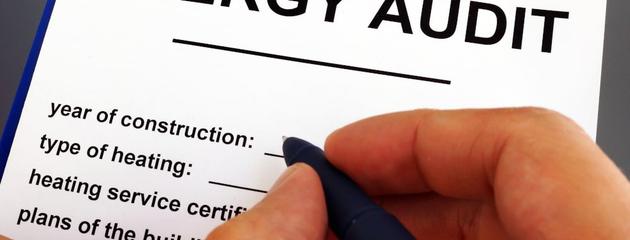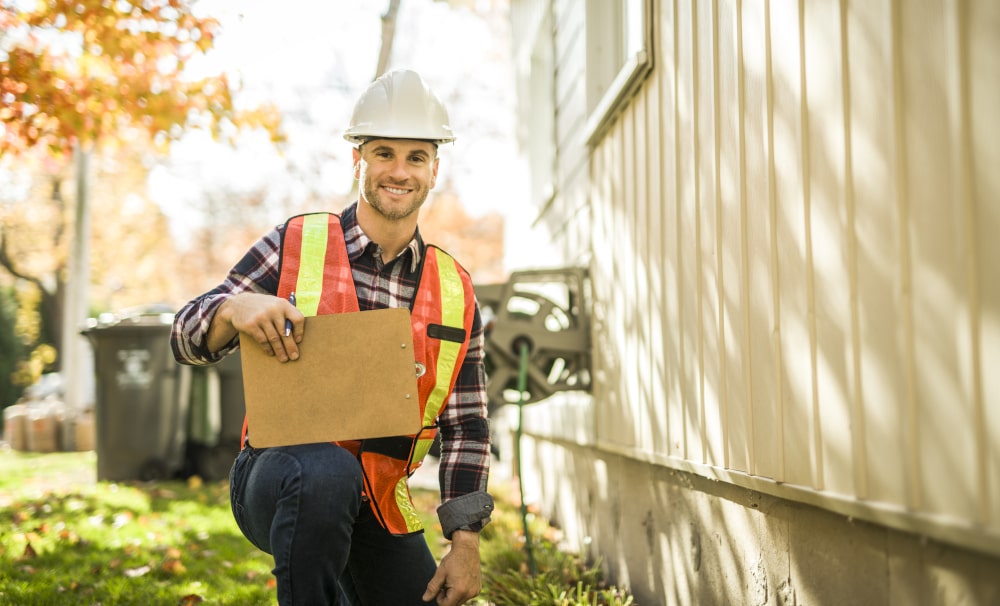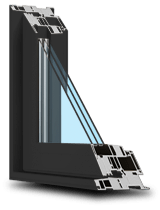Home Energy Audit Explained

A home energy audit quickly shows where your home is losing heat, how air is moving through the structure, and which upgrades will deliver the most significant improvement in comfort and efficiency. By focusing on airtightness, insulation levels, and the performance of windows, doors, and mechanical systems, an audit helps you understand exactly why certain rooms feel cold, why your bills are rising, or why drafts keep returning.
Here are the core actions an energy audit helps you evaluate right away:
- Identify where heat is escaping through gaps, poorly sealed windows, or insufficient insulation.
- Detect hidden drafts with tools such as blower doors, infrared cameras, and airflow meters.
- Assess how well your windows and doors are performing — including seal failure, cold spots, or excessive air leakage.
- Pinpoint which upgrades (windows, doors, insulation, air-sealing) will deliver the highest impact for your specific home.
Key Takeaways
- A home energy audit identifies where your home is losing energy and which upgrades will have the most significant impact on comfort and efficiency.
- Modern audits use tools such as blower doors, infrared cameras, airflow meters, and combustion analyzers to assess insulation, airtightness, ventilation, and system performance.
- Audit findings are beneficial when planning window and door replacements , as they pinpoint air leakage, draft patterns, and insulation gaps.
- Homeowners can choose from several types of audits, including basic visual inspections, comprehensive diagnostic assessments, and specialized system-focused evaluations.
- Acting on audit recommendations enhances year-round comfort, reduces utility costs, and prolongs the lifespan of key home systems.
What Is a Home Energy Audit?
A home energy audit is a detailed evaluation of how efficiently your home uses energy and where heat loss, drafts, or performance issues may be occurring. In your local climate, where seasonal temperature swings are significant, understanding how your home retains heat in winter and stays cool in summer can dramatically improve comfort and long-term energy performance.
An audit typically reviews insulation levels, air leakage points, the effectiveness of your ventilation and HVAC systems, and the overall condition of windows, doors, and mechanical equipment. The goal is not only to measure current efficiency but also to identify which upgrades will deliver measurable improvements.
Why Home Energy Audits Matter
Canadian homes face some of the most demanding weather conditions in the world. Extreme cold, humidity fluctuations, and long heating seasons place added stress on windows, doors, insulation, and mechanical systems. A properly completed energy audit provides:
- A clear understanding of where heat is escaping
- Insight into airflow and draft patterns
- Data about mechanical efficiency
- Recommendations prioritized by impact
By addressing these issues, homeowners can significantly reduce unnecessary heat loss and lower monthly utility costs — especially during the peak winter heating season.
This information is especially valuable when planning major upgrades such as window or door replacement, attic insulation improvements, or air-sealing work.
Types of Home Energy Audits
Below is an updated comparison of the most common audit types used in Canada today.
Comparison of Home Energy Audit Types
| Audit Type | What It Includes | Best For |
|---|---|---|
| Basic Visual Audit | General inspection of insulation, windows, doors, and HVAC age/condition | Homeowners wanting a quick, low-cost overview |
| Diagnostic / Comprehensive Audit | Blower door test, infrared scan, airflow measurement, and mechanical testing | Most homeowners provide the most actionable data |
| Targeted System Audit | Focus on one problem area (HVAC, attic, ventilation) | Homes with a known issue (drafts, uneven heating, humidity) |
| Air Leakage (Airtightness) Audit | Blower door–based test only | Measuring draft severity and heat loss through gaps |
| Thermographic (Infrared) Assessment | Infrared imaging to show cold spots and missing insulation | Evaluating insulation issues and window heat loss |
While each audit type serves a specific purpose, comprehensive assessments offer the most precise understanding of your home’s energy performance. By combining airtightness testing, infrared imaging, and mechanical evaluation, they help identify the most impactful upgrades — ensuring that any improvements you make lead to better comfort and lower long-term utility costs.

What Tools Are Used During a Home Energy Audit?
Common Diagnostic Tools & What They Detect
| Tool | Purpose | What It Reveals |
|---|---|---|
| Blower Door | Creates pressure to measure airtightness | Drafts, leakage points, poor window/door sealing |
| Infrared Camera | Shows temperature variations | Missing insulation, cold walls, and window heat loss |
| Combustion Analyser | Tests fuel-burning appliances | Safety, efficiency, and carbon monoxide concerns |
| Smoke Pencil / Airflow Meter | Detects invisible airflow paths | Drafts around windows, doors, and electrical outlets |
| Duct Leakage Tester | Examines ductwork performance | Heat loss in forced-air heating systems |
These tools work together to create a clear picture of how your home performs. By combining airflow measurements, temperature imaging, and equipment testing, auditors can pinpoint the exact sources of heat loss, drafts, and inefficiencies that impact your comfort and utility costs.
How Home Energy Audits Help You Understand Your Windows and Doors
Windows and doors are often among the most significant contributors to heat loss in Canadian homes. Energy audits highlight issues such as:
- Drafts around casings or frames
- Poorly sealed or failing weatherstripping
- Fogging or seal failure between glass panes
- Cold spots indicating insufficient insulation
- Air leakage caused by older or warped frames
This data helps homeowners make informed decisions when choosing between repair and replacement, as well as when selecting energy-efficient models that match their specific climate conditions.
Tony Wong, Project Manager, explains:
“Many homeowners assume drafts come from the glass itself, but audits often show that air leakage happens around the frame or where the window meets the wall. A proper audit pinpoints the real cause, which helps us recommend the right replacement solution.”

How to Prepare for a Home Energy Audit
A small amount of preparation can help ensure your auditor collects complete and accurate data.
Before the Appointment
- Clear access to mechanical equipment, attic entries, windows, and doors
- Gather recent utility bills for seasonal comparisons.
- List any comfort issues (drafty rooms, cold floors, humidity concerns)
- Close all windows and the exterior doors.
- Ensure pets are secured during testing.
During the Audit
- Be present to answer questions about your home’s history.
- Ask where the most significant heat loss is occurring.
- Request clarity on which improvements will bring the most significant benefit.
Helen Sin, Consumer Success Manager
, adds:
“An audit is most valuable when homeowners are actively involved. The more detail you share about comfort issues, the more tailored the recommendations will be.”
How Long Does a Home Energy Audit Take?
A typical home energy audit ranges from 2 to 4 hours, but the exact duration depends on several factors. Each of the points below plays a role in how long the auditor needs to collect accurate diagnostic data:
Home size and layout
Larger homes or those with multiple wings, additions, or irregular shapes require longer inspection times. More rooms and more exterior walls mean more potential areas for drafts, heat loss, and insulation issues that must be checked individually.
Number of floors
Multi-level homes — especially those with basements and finished attics — require additional time to test airflow, temperature differences, and insulation performance between levels. Each floor presents its own set of challenges and potential heat-loss patterns.
Age and condition of mechanical systems
Older furnaces, boilers, ventilation systems, and air conditioners may need closer inspection to ensure they are operating safely and efficiently. Newer systems typically require less diagnostic work, while aging equipment often demands more detailed testing.
Presence of additions, sunrooms, or older construction
Home additions, enclosed porches, and sunrooms often have different insulation standards from the main structure. Older parts of a home may contain outdated materials or design inconsistencies that require more time to evaluate.
Whether infrared imaging or additional diagnostics are required
Audits that include infrared thermography, duct leakage testing, or more in-depth blower door analysis naturally take longer. These tools provide higher accuracy but require additional setup, scanning, and interpretation time.
Larger or more complex homes may require additional time, especially when extensive insulation gaps, multiple draft sources, or challenging structural details are detected.

What Happens After the Audit?
After the assessment, you will receive a report outlining:
- Areas with the highest heat loss
- Air leakage severity and specific draft locations
- Insulation performance and recommended upgrades
- Windows and doors contribute to energy inefficiency.
- Prioritized recommendations ranked by impact
With this information, homeowners can confidently plan improvements that provide lasting comfort, reliable performance, and lower long-term energy usage.
Frequently Asked Questions
What is the most crucial part of a home energy audit?
Identifying air leakage and insulation gaps is typically the most impactful because drafts and heat loss significantly affect comfort and heating costs in your local climate.
Are blower door tests necessary?
While optional, blower door tests provide precise data on airtightness and are considered the most reliable method for identifying hidden drafts around windows, doors, and structural penetrations.
Will an audit tell me if I need new windows?
Yes. An audit can show draft patterns, seal failure, and temperature differences that help determine whether repair or replacement is the better option.
How often should I get a home energy audit?
Most experts recommend every 5–7 years, or sooner if you notice new drafts, comfort issues, or significant changes in utility bills.
Can I stay home during the audit?
Yes — and it’s recommended. Your input helps the auditor identify comfort problems and tailor the recommendations.
Improve Comfort and Performance Through Clear Insight
A home energy audit provides a clear, data-driven picture of your home's performance and identifies where improvements will yield the most significant long-term benefits. Whether you are experiencing drafts around windows, uneven temperatures, or simply want to make your home more comfortable, an audit is the first step toward thoughtful, effective upgrades.
At Canadian ChoiceWindows & Doors™, our specialists help homeowners interpret audit findings and choose the right window and door solutions for long-term performance.
Contact our team today to discover how the right upgrades can enhance your home’s comfort and efficiency.
1000’s of Colours & Textured Finishes
Transform your home from ordinary to extraordinary with our new coloured and non-glare textured finishes. Available in a wide array of colours as well as custom matched colours for your very own personalized design.
Our Most Popular Replacement Window Colours:









